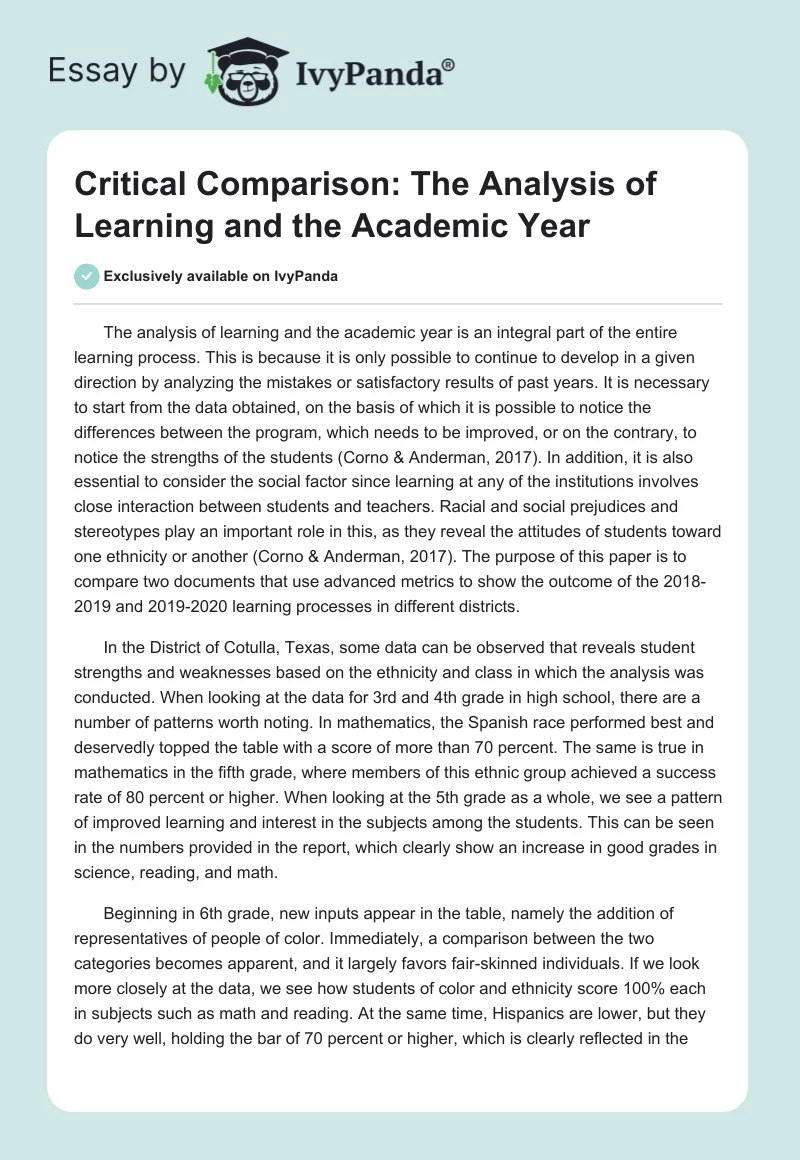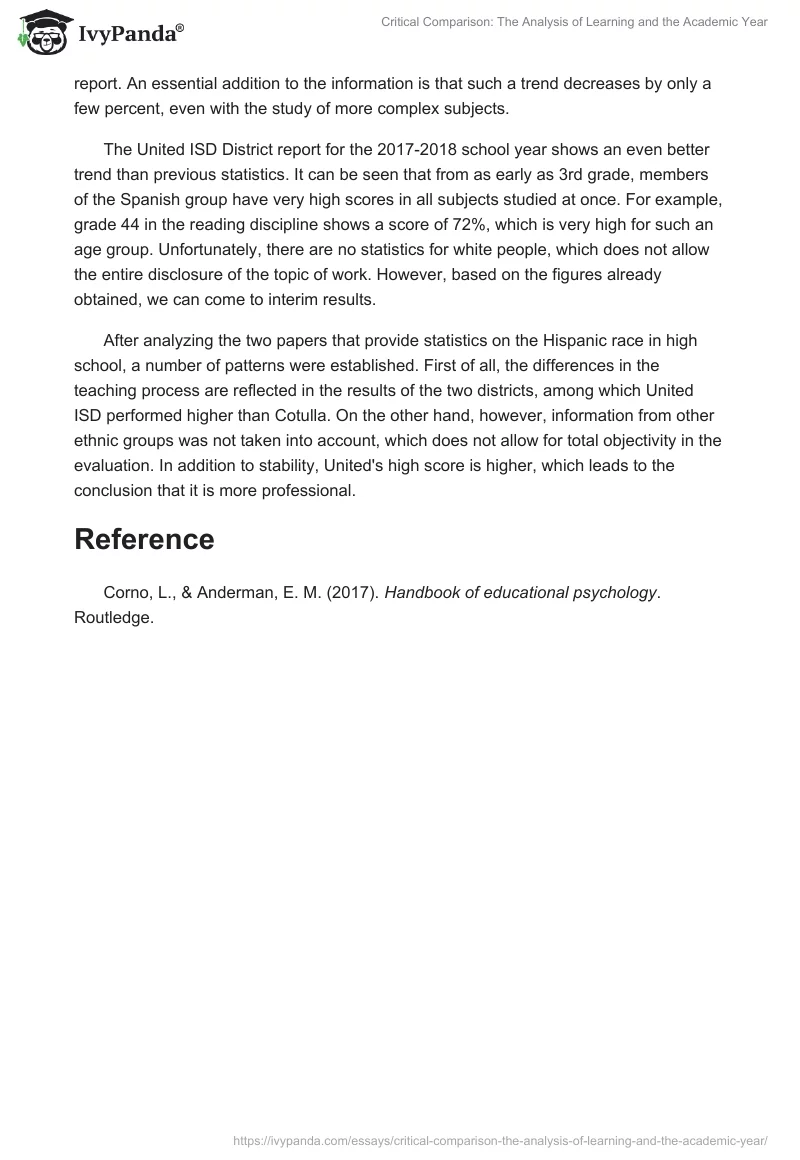The analysis of learning and the academic year is an integral part of the entire learning process. This is because it is only possible to continue to develop in a given direction by analyzing the mistakes or satisfactory results of past years. It is necessary to start from the data obtained, on the basis of which it is possible to notice the differences between the program, which needs to be improved, or on the contrary, to notice the strengths of the students (Corno & Anderman, 2017). In addition, it is also essential to consider the social factor since learning at any of the institutions involves close interaction between students and teachers. Racial and social prejudices and stereotypes play an important role in this, as they reveal the attitudes of students toward one ethnicity or another (Corno & Anderman, 2017). The purpose of this paper is to compare two documents that use advanced metrics to show the outcome of the 2018-2019 and 2019-2020 learning processes in different districts.
In the District of Cotulla, Texas, some data can be observed that reveals student strengths and weaknesses based on the ethnicity and class in which the analysis was conducted. When looking at the data for 3rd and 4th grade in high school, there are a number of patterns worth noting. In mathematics, the Spanish race performed best and deservedly topped the table with a score of more than 70 percent. The same is true in mathematics in the fifth grade, where members of this ethnic group achieved a success rate of 80 percent or higher. When looking at the 5th grade as a whole, we see a pattern of improved learning and interest in the subjects among the students. This can be seen in the numbers provided in the report, which clearly show an increase in good grades in science, reading, and math.
Beginning in 6th grade, new inputs appear in the table, namely the addition of representatives of people of color. Immediately, a comparison between the two categories becomes apparent, and it largely favors fair-skinned individuals. If we look more closely at the data, we see how students of color and ethnicity score 100% each in subjects such as math and reading. At the same time, Hispanics are lower, but they do very well, holding the bar of 70 percent or higher, which is clearly reflected in the report. An essential addition to the information is that such a trend decreases by only a few percent, even with the study of more complex subjects.
The United ISD District report for the 2017-2018 school year shows an even better trend than previous statistics. It can be seen that from as early as 3rd grade, members of the Spanish group have very high scores in all subjects studied at once. For example, grade 44 in the reading discipline shows a score of 72%, which is very high for such an age group. Unfortunately, there are no statistics for white people, which does not allow the entire disclosure of the topic of work. However, based on the figures already obtained, we can come to interim results.
After analyzing the two papers that provide statistics on the Hispanic race in high school, a number of patterns were established. First of all, the differences in the teaching process are reflected in the results of the two districts, among which United ISD performed higher than Cotulla. On the other hand, however, information from other ethnic groups was not taken into account, which does not allow for total objectivity in the evaluation. In addition to stability, United’s high score is higher, which leads to the conclusion that it is more professional.
Reference
Corno, L., & Anderman, E. M. (2017). Handbook of educational psychology. Routledge.


